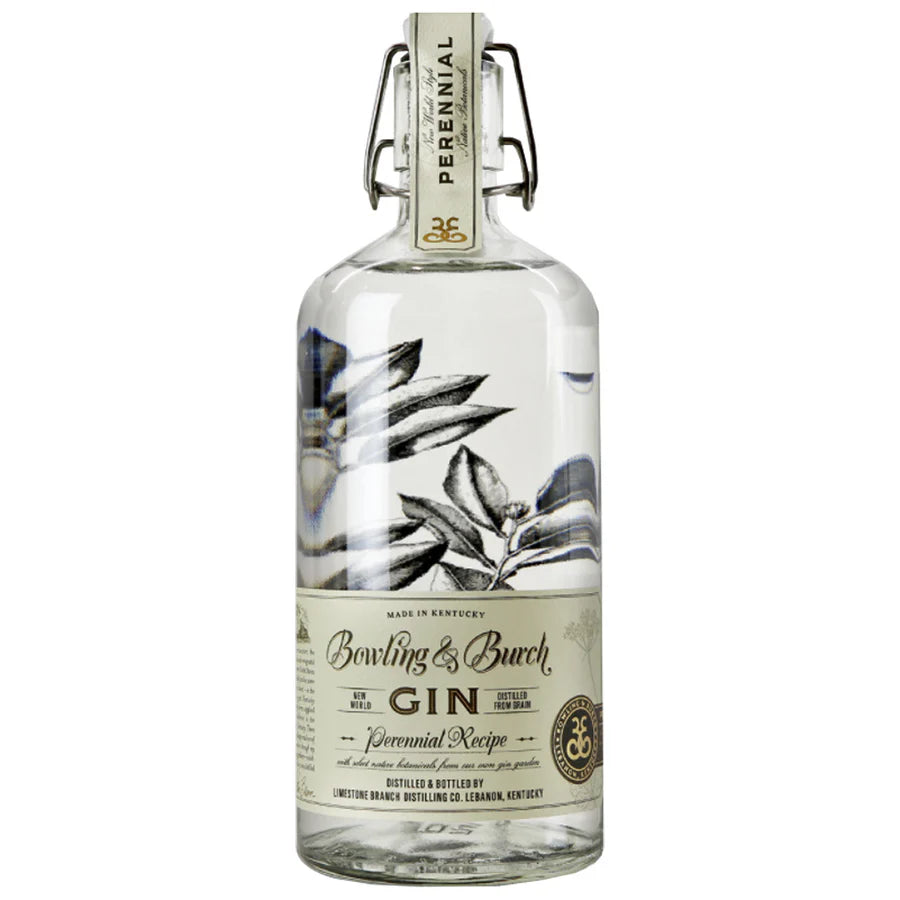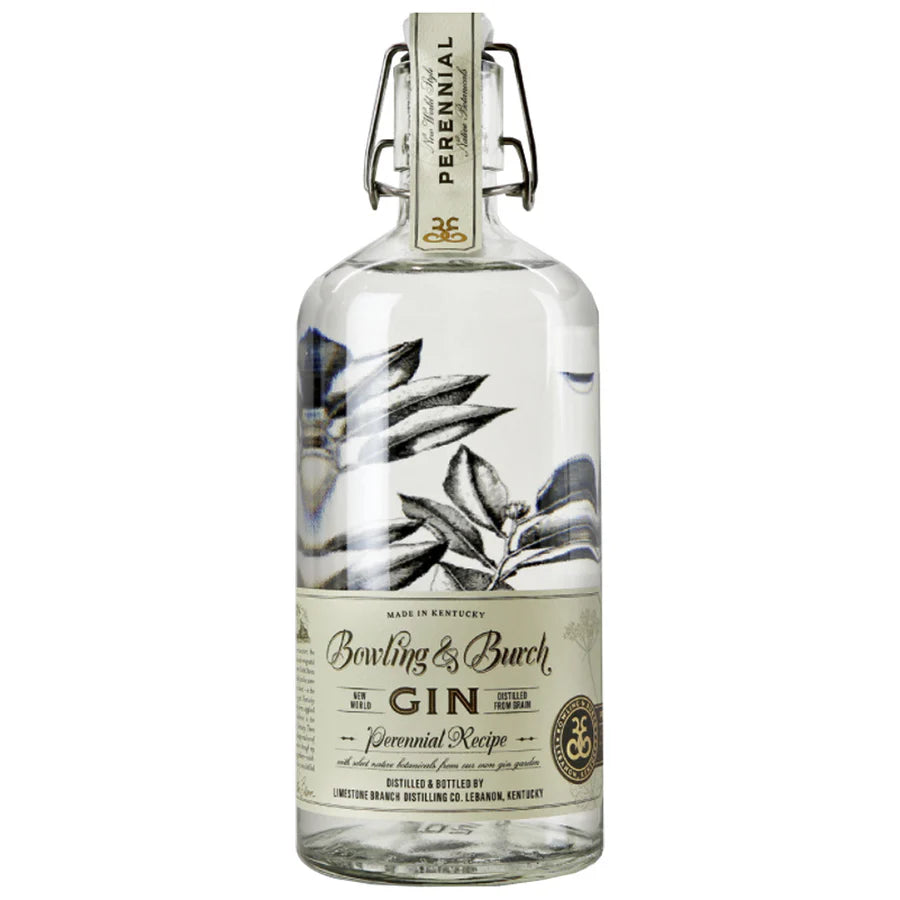Bowling & Burch Gin (750ml)
Bowling & Burch Gin (750ml)
Born from distiller Steve Beam’s green thumb and a passion for experimentation he inherited from his ancestors, Bowling & Burch is a high-quality, small-batch gin blended with 17 botanicals. Eight of those are grown and tended to at Limestone Branch Distillery: bitter orange, black cherry, honeysuckle, rosemary, lemongrass, lemon verbena, blackberry, and coriander.
The resulting botanical blend — conserved in an apothecary-style bottle screen-printed with a sophisticated floral motif — is a garden party in a glass just begging for a lemon twist.
NOSE
Fragrant with herbal notes of rosemary, thyme, and citrus
PALATE
Tart orange, honeysuckle, lemon verbena, and coriander on the front
FINISH
Zippy with spice
96 Proof - 48% ABV
$25 Shipping on Orders +$299
Couldn't load pickup availability
Share :

- Type
- Reviews


